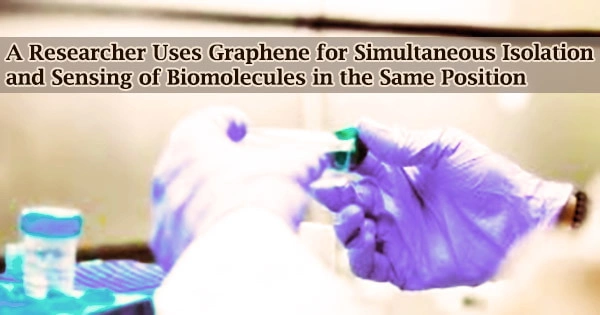With the use of recent research, Jinglei Ping, an assistant professor at the University of Massachusetts Amherst, has successfully isolated and detected molecules simultaneously in a microdevice.
The study, which was just published in ACSNano, shows a significant advancement in the use of graphene for electrokinetic biosample processing and analysis. This advancement may enable lab-on-a-chip devices to be smaller and produce results more quickly.
The process of detecting biomolecules has been complicated and time-consuming.
“We usually first have to isolate them in a complex medium in a device and then send them to another device or another spot in the same device for detection,” says Ping, who is in the College of Engineering’s Mechanical and Industrial Engineering Department and is also affiliated with the university’s Institute of Applied Life Sciences.
“Now we can isolate them and detect them at the same microscale spot in a microfluidic device at the same time no one has ever demonstrated this before.”
This development was made possible by his lab’s use of graphene, a honeycomb-like structure of carbon atoms that is one atom thick, as microelectrodes in a microfluidic system.
We usually first have to isolate them in a complex medium in a device and then send them to another device or another spot in the same device for detection. Now we can isolate them and detect them at the same microscale spot in a microfluidic device at the same time no one has ever demonstrated this before.
Jinglei Ping
“We found that, compared to typical inert-metal microelectrodes, the electrolysis stability for graphene microelectrodes is more than 1,000 times improved, making them ideal for high-performance electrokinetic analysis,” he says.
Also, Ping added, since monolayer graphene is transparent, “we developed a three-dimensional multi-stream microfluidic strategy to microscopically detect the isolated molecules and calibrate the detection at the same time from a direction normal to the graphene microelectrodes.”
Ping claims that the new methodology created in the work opens the door to the development of lab-on-a-chip devices with the highest time and size efficiency.
Additionally, the method is not just confined to studying proteins; it may also be used to distinguish between, find, and stimulate microorganisms like bacteria and cells.





